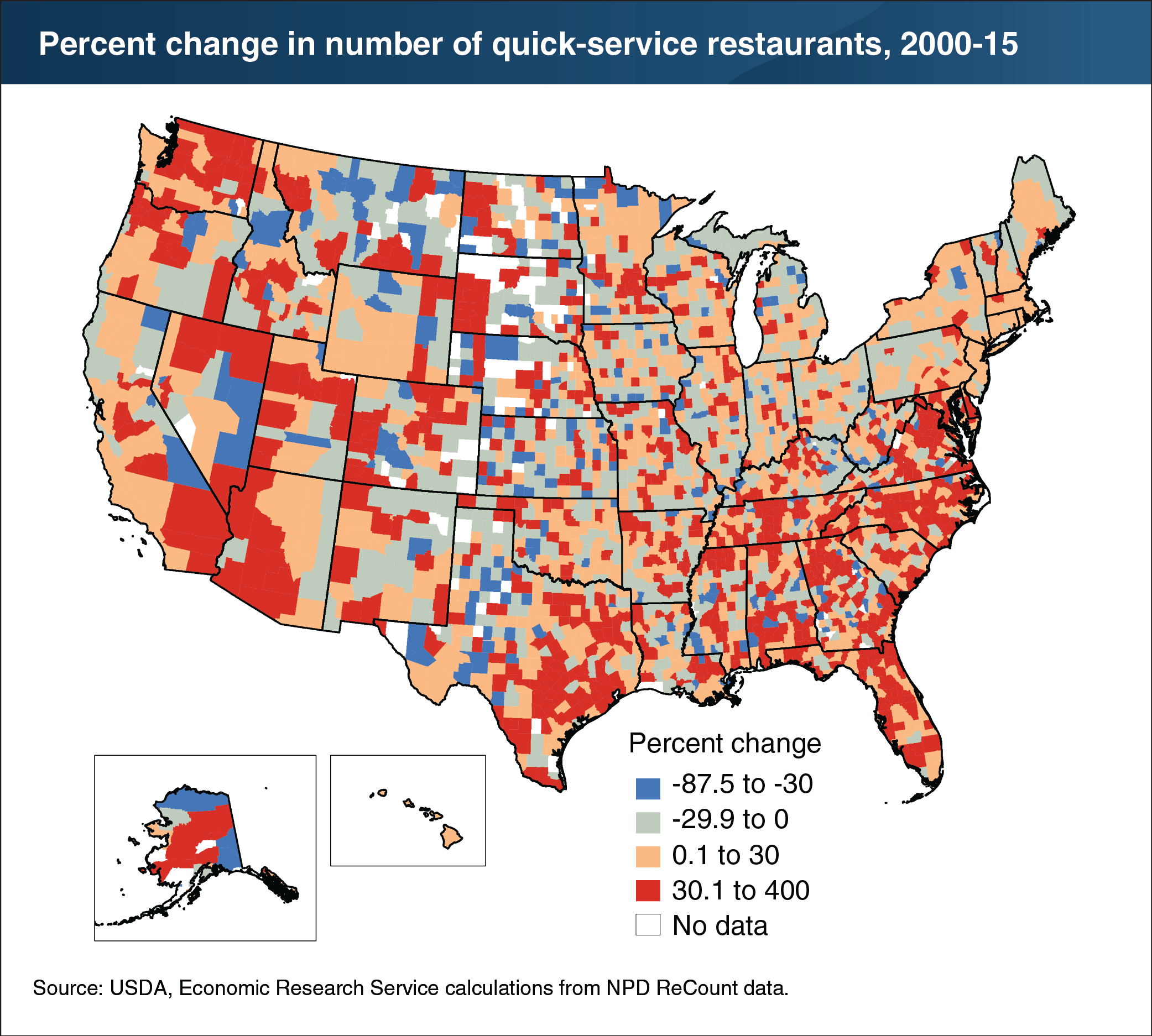As quick-service restaurants proliferate, growth patterns mirror rural-urban migration trends
- by Patrick W. McLaughlin
- 12/6/2018

Over the last decade and a half, the number of quick-service restaurants—eating places where food is ordered and paid for at a counter—operating in the United States grew by nearly 20 percent, from roughly 285,000 establishments in 2000 to over 340,000 in 2015. This growth did not unfold uniformly across the country. Many urban counties, especially in the Mid-Atlantic, the Southeast, and rapidly urbanizing counties in the Western states, experienced growth in quick-service restaurants during 2000-15 that exceeded 30 percent, significantly higher than the 20-percent national average. One driver of quick-service restaurant growth in urban counties was the emergence of the fast-casual restaurant—a category of quick-service restaurants embodying the format’s typical counter service and price point but with perceived higher quality of menu offerings and ingredients, as well as ambiance much like casual full-service restaurants. While some rural counties experienced growth in quick-service restaurants during 2000-15, others sustained losses, especially in the central United States, consistent with patterns of rural-urban migration. This map appears in “Growth in Quick-Service Restaurants Outpaced Full-Service Restaurants in Most U.S. Counties” in ERS’s November 2018 Amber Waves magazine.
We’d welcome your feedback!
Would you be willing to answer a few quick questions about your experience?

